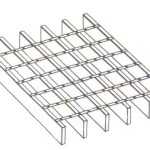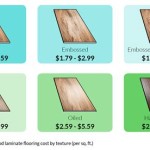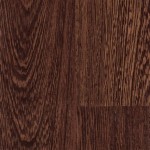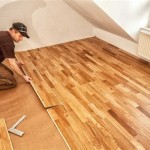What Direction Should You Lay Laminate Flooring In A Room?
When installing laminate flooring, one of the important decisions you'll make is the direction in which you lay the planks. This choice can significantly impact the overall look and feel of your room, so it's crucial to consider various factors before making a final decision.
In this guide, we'll explore the key factors to keep in mind when determining the direction to lay laminate flooring in a room, providing you with valuable insights to make an informed decision that complements your space.
1. Room Shape and Size
The shape and size of your room play a vital role in determining the best direction to lay laminate flooring. For long and narrow rooms, laying the planks along the length of the room can create a more spacious and cohesive look. This direction helps to elongate the room and draw the eye towards the far end, making it appear larger.
In contrast, for wider rooms, laying the planks perpendicular to the longest wall can create a wider and more open feel. This direction helps to break up the width of the room and make it appear less boxy.
2. Natural Light
The direction of natural light entering your room can influence the way laminate flooring appears. If you have large windows or doors that allow ample natural light, consider laying the planks parallel to the direction of the light. This alignment helps to minimize the visibility of seams and creates a more uniform and cohesive look.
On the other hand, if your room receives limited natural light, laying the planks perpendicular to the light source can help to reflect more light and make the room appear brighter and more spacious.
3. Existing Features
Take into account any existing architectural features in your room, such as fireplaces, built-in shelving, or staircases. The direction of laminate flooring should complement these features and enhance their visual appeal. Consider laying the planks in a way that frames or highlights these elements, creating a harmonious and visually pleasing environment.
For instance, if you have a fireplace as a focal point, laying the planks in a radiating pattern around it can accentuate its presence and create a cozy and inviting atmosphere.
4. Design and Style
The design and style of your room should also influence the direction you lay laminate flooring. For a classic and timeless look, parallel installation, where the planks run parallel to the longest wall, is often a popular choice. This direction creates a sense of order and symmetry, complementing traditional and contemporary decor styles.
If you prefer a more modern and eclectic look, herringbone or chevron patterns can add a touch of sophistication and visual interest. These patterns involve laying the planks in a zigzag or V-shape, creating a dynamic and eye-catching effect.
5. Practical Considerations
In addition to aesthetic factors, practical considerations may also impact the direction you lay laminate flooring. For areas with heavy foot traffic, such as hallways or entryways, laying the planks perpendicular to the main direction of foot traffic can help to distribute wear and tear more evenly, extending the life of the flooring.
Consider the potential for moisture or spills in certain areas of the room. If there are areas where water exposure is likely, laying the planks in a direction that allows for proper drainage and ventilation can help prevent damage.

Determining The Direction To Lay Install Hardwood Laminate Or Luxury Vinyl Plank Flooring

Which Direction To Lay Your Hardwood Flooring Riterug

How To Lay Laminate Flooring 13 Steps With S Wikihow

Which Direction Should The Floor Be Laid Real Wood Floors

Installing Laminate Flooring In Hallways Do It Yourself

Which Direction To Lay Your Hardwood Flooring Riterug

Which Direction To Lay Laminate Flooring Factory Direct

Determining The Direction To Lay Install Hardwood Laminate Or Luxury Vinyl Plank Flooring

How To Install Laminate Flooring For Beginners

Which Direction Do You Lay Vinyl Plank Flooring Google Search Laying Laminate Bedroom Installing
Related Posts








